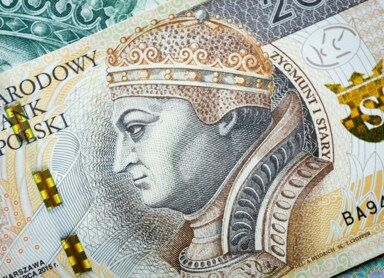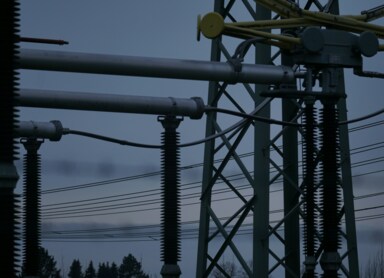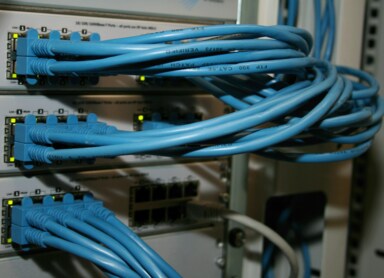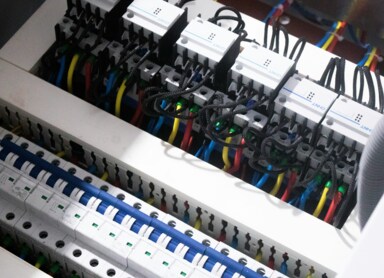What is the Spot Market? Energy Without Secrets
Electricity trading through immediate (spot) transactions is carried out via short-term transactions. These can be executed within the operations of the day-ahead market, as well as the spot market. Let’s take a closer look at the spot market. How does it work, and what does it entail?
Spot Market – Basic Information and Definition
The spot market involves transactions known as intraday trading, where electricity is bought and sold "in real-time" on the same day the delivery is to occur. Currently, the largest intraday exchanges are conducted on the EPEX SPOT exchange based in Paris and within the pan-European NordPool exchange. Transactions can also be concluded in over-the-counter (OTC) trading. Sometimes, the intraday market is referred to as a short-term wholesale energy market, in contrast to long-term Power Purchase Agreements (PPA).
In Poland, energy trading takes place on the TGE, the Polish Power Exchange, headquartered in Warsaw. The market was established in 1999 and allows transactions to be executed in PLN and EUR.
How Does the Spot Market Work?
Let's take a closer look at how the spot market works using EPEX as an example. EPEX is a large market, so the main mechanisms are clearly visible there. However, keep in mind that individual exchanges may introduce slightly different energy trading conditions.
At EPEX, electricity trading is conducted in intervals. These intervals last for 15 minutes or an hour, although transactions can also be conducted in other time windows. Standard transactions can be carried out in a base variant 24 hours a day or a peak variant from 8:00 to 20:00 on business days (Monday to Friday).
Short intervals are characteristic of the EPEX market, allowing for the possibility of contracting energy delivery just 30 minutes before the planned delivery time. That’s very short! For example, if a buyer needs 30 MWh in a 15-minute window from 12:00 to 12:15 and finds a supplier who can provide this amount of power, the transaction must be concluded by 11:30.
To ensure the greatest possible flexibility in electricity trading, exchanges are gradually reducing delivery times. Ten years ago in Germany, the lead time was 45 minutes. Today, it's only 5 minutes. The shorter the lead time, the less advance notice the buyer needs to close the transaction. This allows the buyer to seek the best offer or alternative solutions until almost the last moment.
Transactions on the spot market are concluded anonymously, similar to stock trading on a stock exchange. All electricity is traded in exactly the same way, regardless of whether it comes from conventional or renewable sources. Moreover, the seller does not need to provide a certificate of origin for the energy. The minimum amount of energy that can be sold is 0.1 MW, which is the same for both the intraday and day-ahead markets.
Differences Between the Spot Market and the Day-Ahead Market, Benefits, and Challenges of the Spot Market
The key difference between the day-ahead and the spot market is the delivery time. In the first case, the supplier commits to producing and delivering electricity the next day. In the second case, the delivery takes place the same day. This allows for meeting spontaneous needs that are difficult to predict and could not be met through day-ahead market transactions, let alone standard long-term contracts. It's a way to quickly balance energy by selling generated surpluses or purchasing missing kilowatt-hours.
Using the spot market is also a way to fulfill obligations imposed on suppliers who, under signed PPAs, are obliged to deliver a specified amount of energy at a given time. If, for any reason, the supplier is unable to generate the required amount of power independently, they can always make up the shortfall using intraday trading.
Finally, the spot market serves as a tool to increase the stability of the energy market. By providing instruments that allow contracts for delivery with very little notice, market participants protect themselves from electricity deficits, ensuring energy security.
Trading on the spot market in Poland is completely safe, as it is supervised by the Financial Supervision Authority. Transaction parties can also be assured that the quantitative parameters of each transaction are reported to the TSO, ensuring accurate settlement. In case of discrepancies, the data specified for the exchange's graphical unit are used as binding values, eliminating unforeseen losses due to errors.
Examples of the Spot Market Functioning in Poland
The spot market operates effectively in most developed countries worldwide. But how does the TGE in Warsaw1 operate?
The main goal of implementing the spot market was to provide market participants with a tool that allows for correcting contract positions after the day-ahead market operations are closed. In Poland, hourly contracts for the physical delivery of electricity are listed. Transactions are conducted between 7:15 and 14:30. Operations are performed in a uniform price system (fixing) and a continuous trading system conducted through the Condico Trade system—a platform licensed by global giant NASDAQ OMX. On the day before delivery, both systems are available; on the delivery day, only continuous trading is allowed. Currently, the spot market is conducted under the efficient SIDC model (Single Intraday Coupling), which allows for matching buy and sell offers located in different price zones, provided there is transmission capacity.
Membership in the energy exchange can be achieved through a brokerage house or directly, upon meeting legal, financial, and technical requirements and signing an agreement with TGE.
How Are Transactions Settled on Energy Markets?
TGE not only coordinates quotations and oversees the course of transactions but also settles them. This is handled by the Commodity Clearing House S.A., which uses the services of a Settlement Bank. Settlements are conducted daily after the session closes. However, financial flows are implemented on a weekly cycle, meaning that liabilities and receivables are aggregated weekly from all exchange members and settled at the end of the week.
Participation in the commodity energy exchange provides every company with the opportunity to purchase electricity at a favorable price and in exactly the quantity needed at any given time. Currently, the Polish TGE offers as many as six different markets, allowing safe, active, and profitable trading not only in electricity but also in property rights and CO2 emission allowances. At the same time, TGE’s shareholder structure is relatively stable, consisting of several entities, with over 20% owned by the State Treasury. The transparent structure and clear relationships with market participants result in steadily increasing turnover on the TGE each year.
If your company plans to frequently purchase electricity, the TGE or other such markets are certainly worth exploring.
1. https://tge.pl/pub/TGE/files/news/Rynek-RDB/RynekRDBnaTGE_mar2010_PL.pdf [dostęp: 18.07.2024 r.]






